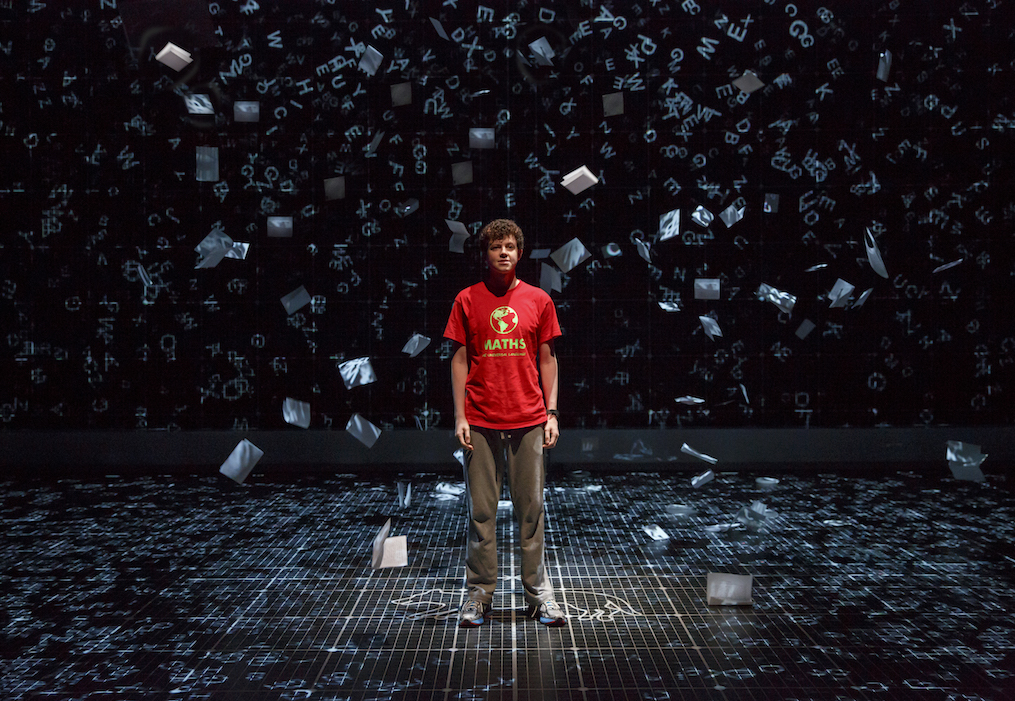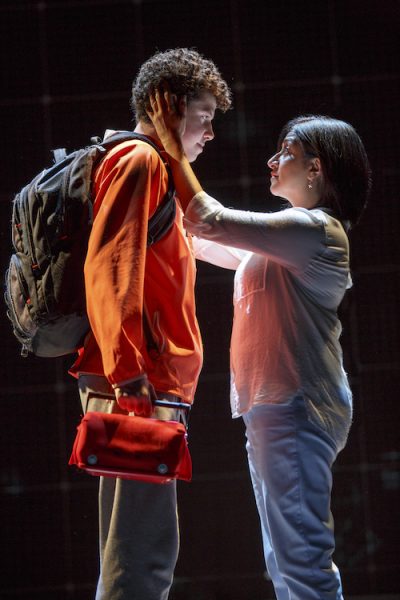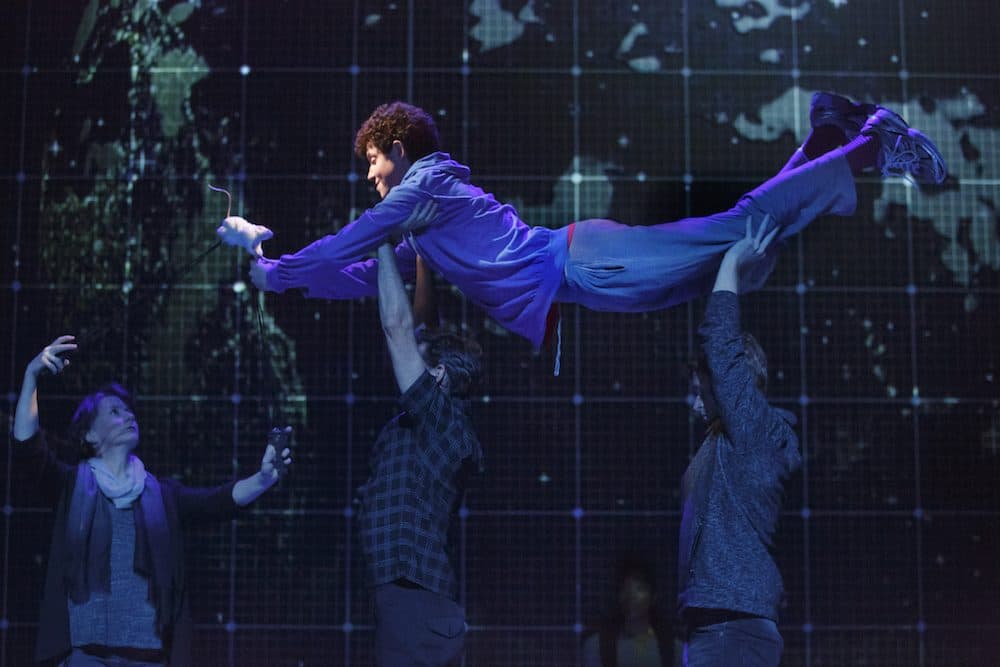Advertisement
Review
'Curious Incident' Settles For Theatricalizing Rather Than Dramatizing At The Boston Opera House

What can you say about a dead dog that hasn't been said already? That it was stabbed with a pitchfork and discovered by a teenage math wiz with some unusual behavioral problems? "Holy f---", the play's opening salvo, is delivered by the dog's owner as she stumbles upon the teenager at the grisly scene in a shaft of light, center stage. So begins "The Curious Incident of the Dog in the Night-Time." Unfortunately, I became less curious the more I learned about 15-year-old Christopher and his dysfunctional family as he set out to uncover the mystery of the neighbor's murdered dog.
Based on the best-selling novel by Mark Haddon, this "new play" by Simon Stephens, directed by Tony Award-winner Marianne Elliott and presented by The National Theatre at the Boston Opera House (through March 19) is full of bells and whistles, and the winner of five Tony Awards including Best Play. Given the accolades and the juicy premise promising to usher us into the mind of a young mathematical savant who may have Asperger's (the novel never uses that word), I had hoped for something ingenious. What I discovered instead was a tedious, though perhaps faithful, cataloguing of what someone on the autism spectrum might experience; but given the constant sensory overload modern life has inflicted on all of us, Christopher's experience seemed almost ordinary.

That said, Adam Langdon as the young Christopher Boone is completely winning and credible in the role. Christopher has an acutely literal mind and thus considers "metaphor" a kind of "lie." He can't bear to be touched, fears strangers and germs, and has difficulty feeling and empathizing. When most folks are saying "hello" and trying to warm up to you, Christopher is most likely counting the hairs on your head — and getting it right.
As our young protagonist sets out Sherlock Holmes-like to solve the mystery of the murdered mutt, he records his efforts in a diary that his teacher Siobhan (Maria Elena Ramirez) reads aloud — a theatrical device placing us inside Christopher's head. His odyssey takes him out of his comfort zone as he interrogates the neighbors about the incident. We come to learn about his flawed family, too — a hot-tempered father Ed (Gene Gillette), a caring and also careless mother Judy (Felicity Jones Latta), and their clueless extramarital partners. But none of these characters made much sense or won my sympathy. Their approaches to life are infinitely less transparent than that of their literal-minded son as he struggles to make sense of his parents, their entanglements and the world around him.
By the end of Act I, the "mystery" of the pierced pooch is blunted; and in Act II we're put on several interminable train rides that involve Christopher learning the ways of the world: using a cash machine, buying a ticket, using a bathroom aboard the train, avoiding the police, hiding amid the luggage and chasing his pet rat around the third rail. A little of this goes a long way. The remaining drama hinges on the screwy behaviors of his parents and their pals, and puts maximum strain on the sets, lighting, sound and staging.
It is quite a set crafted by the Tony Award-winning design team: a mostly darkened proscenium ringed by the actors, some in multiple roles who step forward or enter from the audience on cue into a space which is enveloped floor to ceiling by a huge grid. (Given the projections on the floor, I wondered why the stage wasn't raked so we could see it.) This grid is a portal to Christopher's external and internal life: It lights up, sometimes with streaks of rain to indicate the weather, or with Christopher's diagrams, or his dreams of being an astronaut, or maps of the city, or numbered addresses of his neighborhood. Sometimes the actors carry Christopher around so that he appears to be walking up the walls or tumbling unfettered through space. When Christopher is exposed to the cacophony of everyday urban life, his synapses become overloaded and the stage explodes in a storm of light and sound. A little of this also goes a long way — and feels mighty literal itself.

So yes, we all have different ways of communicating, but by bravely risking a trip beyond our usual parameters we might just grow — and like Christopher, grow up. But "The Curious Incident of the Dog in the Night-Time" settles for theatricalizing rather than dramatizing, and the overblown staging doesn't make up for what the script lacks: a way to make this material new, compelling or revelatory. The final blow came toward the end of the play, with a shameless grab for affection.
At the curtain, I fled. Apparently after the bows, the cast fulfilled a promise made earlier in the play to reveal the answer to a mathematical theorem. I confess, I missed it; but after almost 2 hours and 45 minutes? Stick a fork in me — I'm done.